Guide A-612
Revised by Jane Breen Pierce and Phillip Lujan
College of Agricultural, Consumer and Environmental Sciences, New Mexico State University
Respectively, Extension Entomologist and Plant Diagnostician/Pesticide Safety Education Program Manager, Department of Extension Plant Sciences, New Mexico State University. (Print Friendly PDF)
Why Know Surface Measurement of the Target Area?
All pesticides labeled by U.S. Environmental Protection Agency (EPA) have a specified rate of pesticide that can be legally applied to a unit area of land. To apply the legal amount of a pesticide, the surface area must be known. If more or less than the specified range is used, the use is a violation of federal law.
Even with products that are not labeled, such as soil amendments, surfactants, or liquid fertilizers, good management practices require knowing the economic and environmental effectiveness and efficiency of the application. This requires knowledge of the application rate.
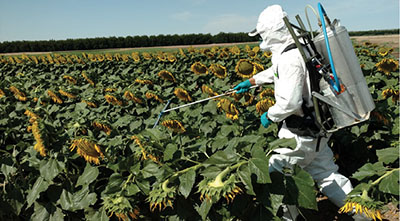
Field Measurement Notes
Recorded measurements and simple field drawings can be used to determine surface area. Basic sketches help by showing the sides measured, obstacles not targeted for application, transverse lines inserted for area calculations (described below), and other considerations. Once the area is accurately measured, field notes can be kept for future reference or revision.
Surface area measurements can be stored indefinitely as long as the plot size does not change. These records should be kept along with field pesticide application records.
For most jobs, a 100-foot measuring tape is adequate. Vinyl or plastic tapes are easier to move around the field and resist abrasion better than metal tapes. When measuring lengths greater than the tape measure, a set (6–10) of metal stakes or pins put in the ground can be used.
Basic Geometry for Determining Surface Area
A few basic geometry formulas can be used to calculate surface area. If you are applying pesticides to a small, easily measured area, the following formulas and examples will be helpful. However, for most applicators, it will be easier to use a simple cell phone or computer app for all but very small and easily measured plots. Software changes rapidly, but one currently available example is GPS Fields Area Measure, which is available at no cost for Android and Apple products.
Square and rectangular fields:
Length (L) × Width (W) = Area

Fields with right triangles: Base × Height ÷ 2 = Area
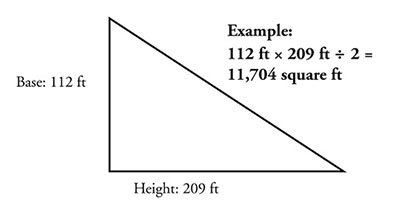
Triangle shapes with no square corners: Create right angles by choosing a transverse line and measuring the length of the new side. Include the new lines in your field drawing.
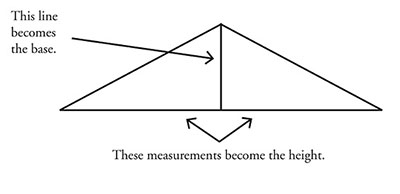
Other straight-sided irregular shapes. As in the example above, divide irregular fields into squares, rectangles, and triangles by using strategically placed transverse lines.
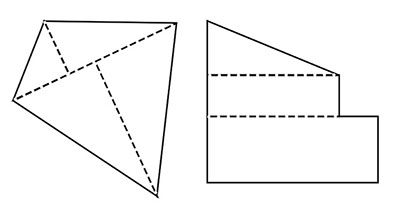
Other Useful Information for Determining Surface Area
• Area of a circle = radius2 × 3.14
• 1 acre = 43,560 square feet
• Square feet ÷ 43,560 = total acreage
For Further Reading
A-610: Extension Pesticide Applicator Training Series–#1 Pest Identification
https://aces.nmsu.edu/pubs/_a/A610/
A-611: Extension Pesticide Applicator Training Series–#2 Pest Management Practices
https://aces.nmsu.edu/pubs/_a/A611/
A-613: Extension Pesticide Applicator Training Series–#4 Sprayer Calibration
https://aces.nmsu.edu/pubs/_a/A613/
A-614: Extension Pesticide Applicator Training Series–#5 Calculating Pesticide Amounts for Broadcast Applications
https://aces.nmsu.edu/pubs/_a/A614/
Original author: R.C. Runyan, Extension Specialist.
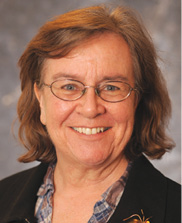
J. Breen Pierce is a research and Extension entomologist at the NMSU Agricultural Science Center in Artesia. Her program focuses on integrated pest management of insect pests of alfalfa, pecan, and cotton, including biological control of alfalfa weevil and pecan nut casebearer, development of economic thresholds, and variation in plant resistance.
Brand names appearing in publications are for product identification purposes only. No endorsement is intended, nor is criticism implied of similar products not mentioned.
To find more resources for your business, home, or family, visit the College of Agricultural, Consumer and Environmental Sciences on the World Wide Web at aces.nmsu.edu/pubs.
Contents of publications may be freely reproduced, with an appropriate citation, for educational purposes. All other rights reserved. For permission to use publications for other purposes, contact pubs@nmsu.edu or the authors listed on the publication.
New Mexico State University is an equal opportunity/affirmative action employer and educator. NMSU and the U.S. Department of Agriculture cooperating.
Revised November 2019 Las Cruces, NM


